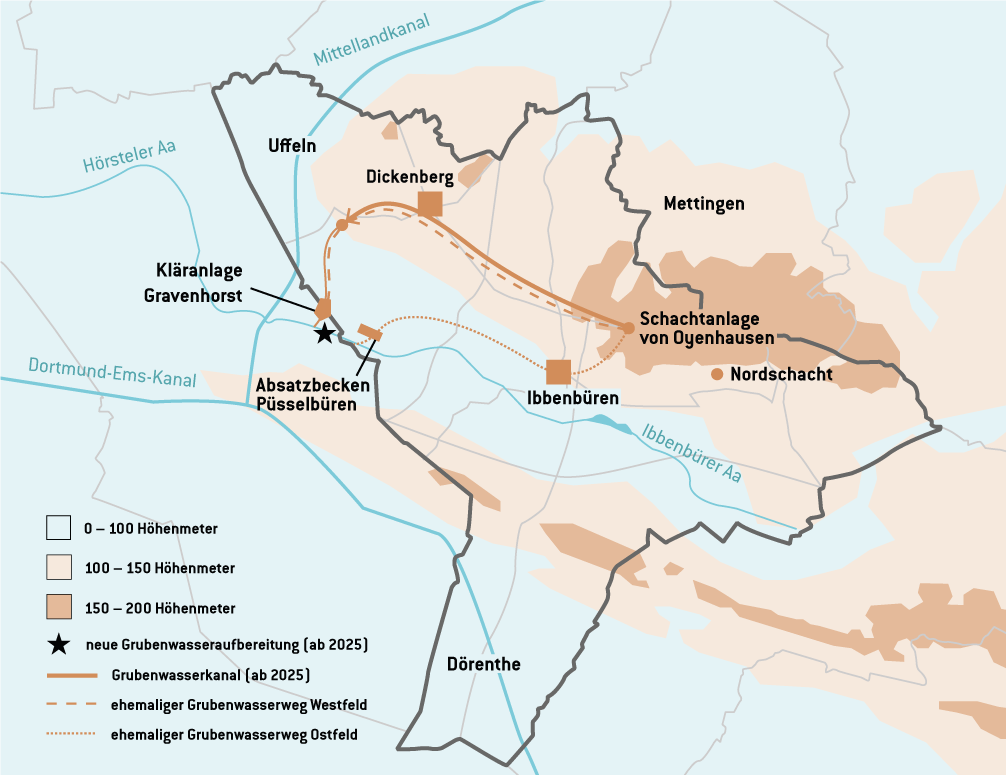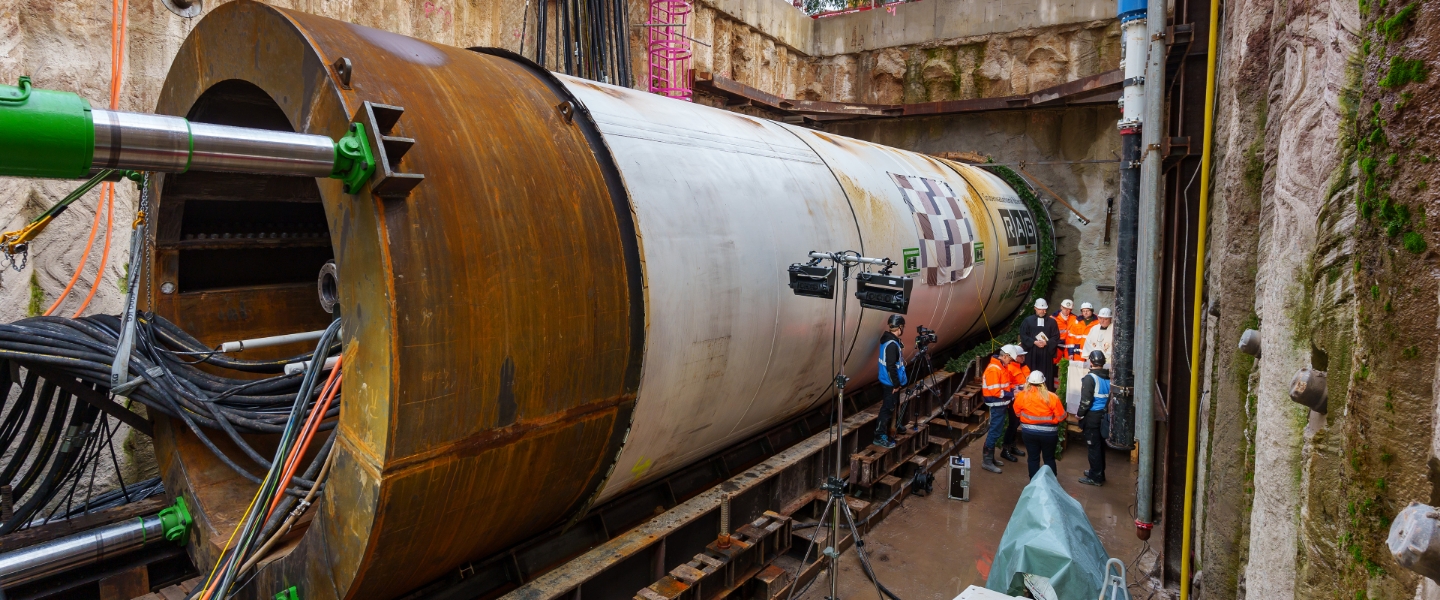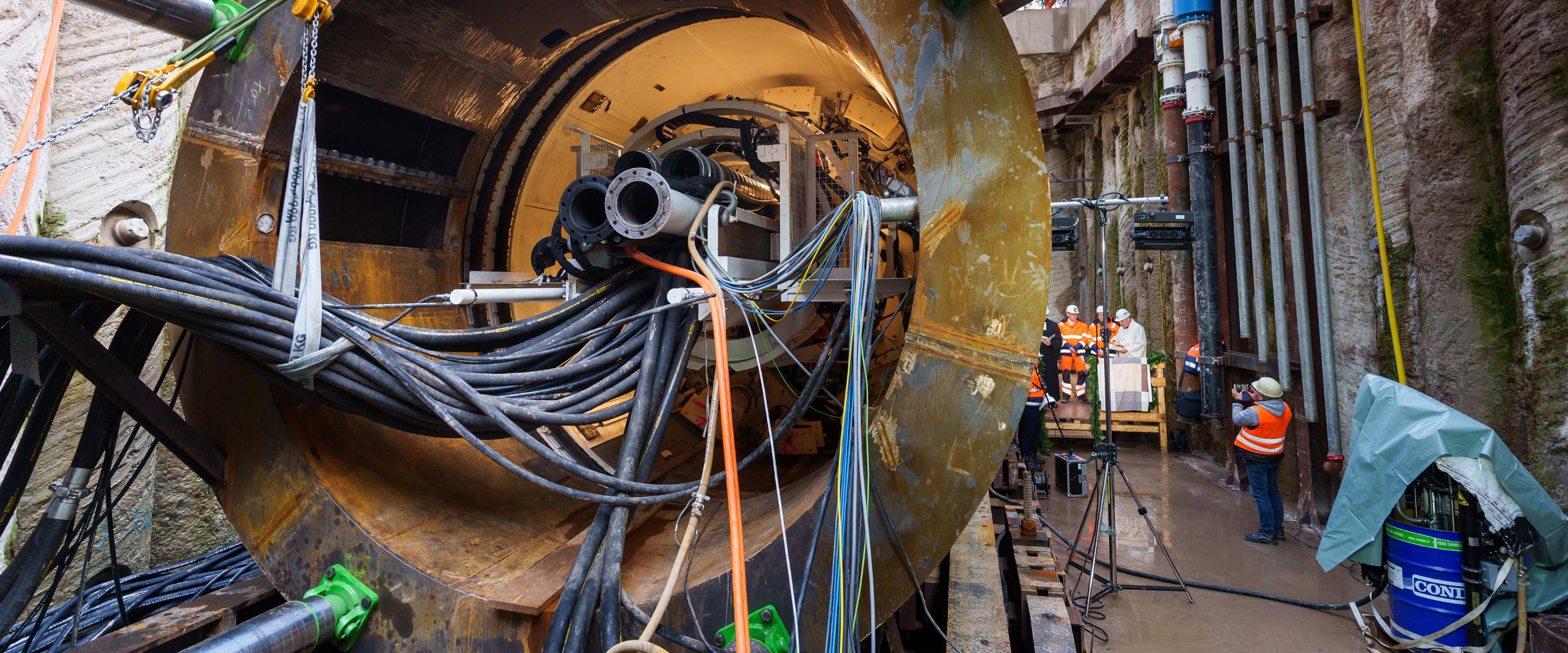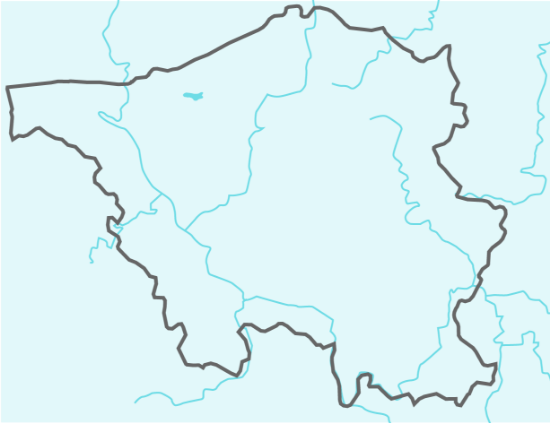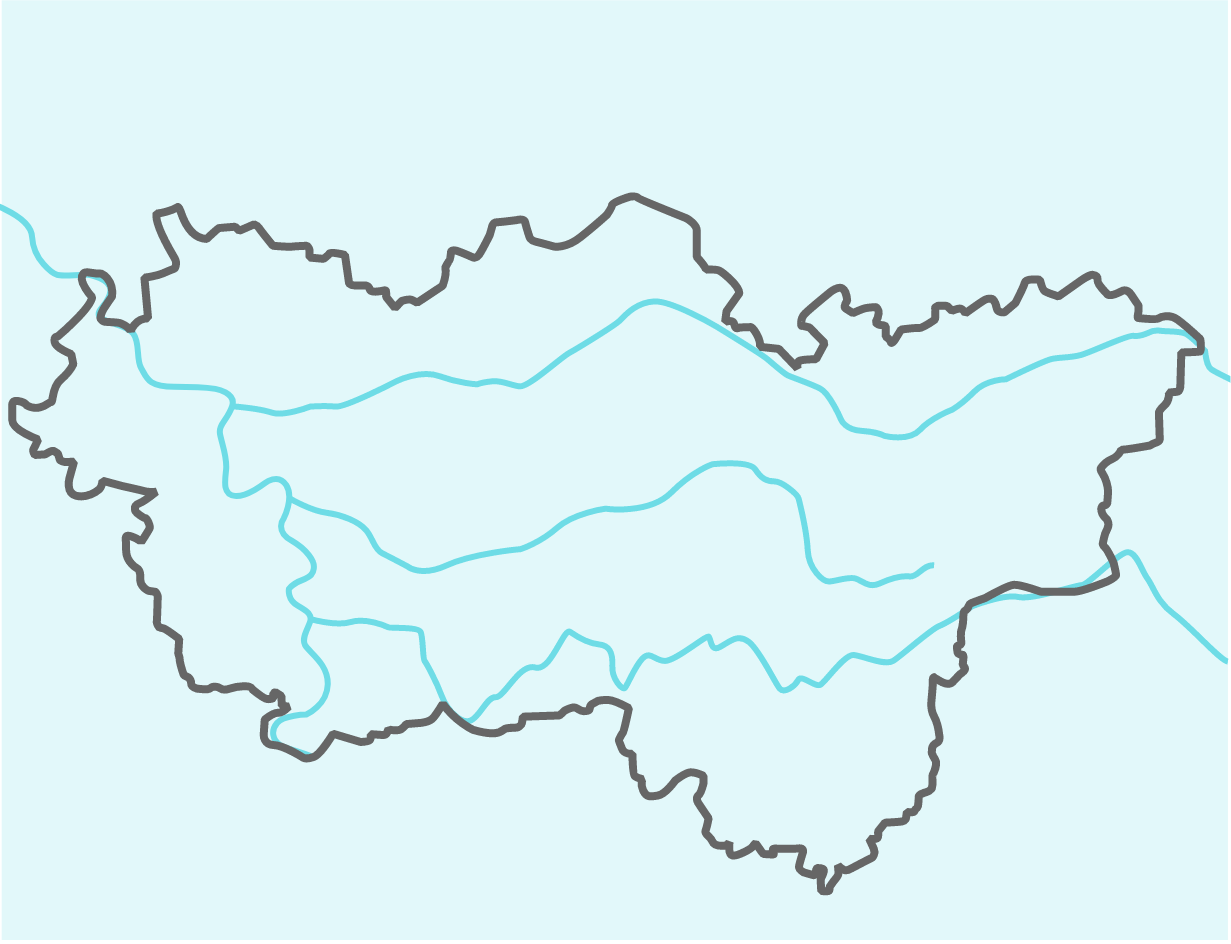
Ibbenbüren
Hard coal was mined in the Tecklenburger Land region for around 500 years. That was a difficult task, not least because of the challenging geology. In the West Field of the Ibbenbüren mine, mining was stopped at the end of the 1970s at a depth of –600 metres. Operations continued in the East Field, up a final depth of 1,560 metres.
The end of German hard coal mining also meant that production in Ibbenbüren ceased in 2018. In April 2020, the competent authorities approved the closure plan submitted by RAG, including all provisions under mining and water law. On the basis of that, backfilling of the shafts was completed in March 2021. The operating areas above ground were cleared and prepared for rapid re-use. The environmentally compatible design of the site is an essential contribution to successful structural change in the region. That also includes extensive construction measures to enable long-term pit water management.
Controlled increase in mine water
New mine water canal
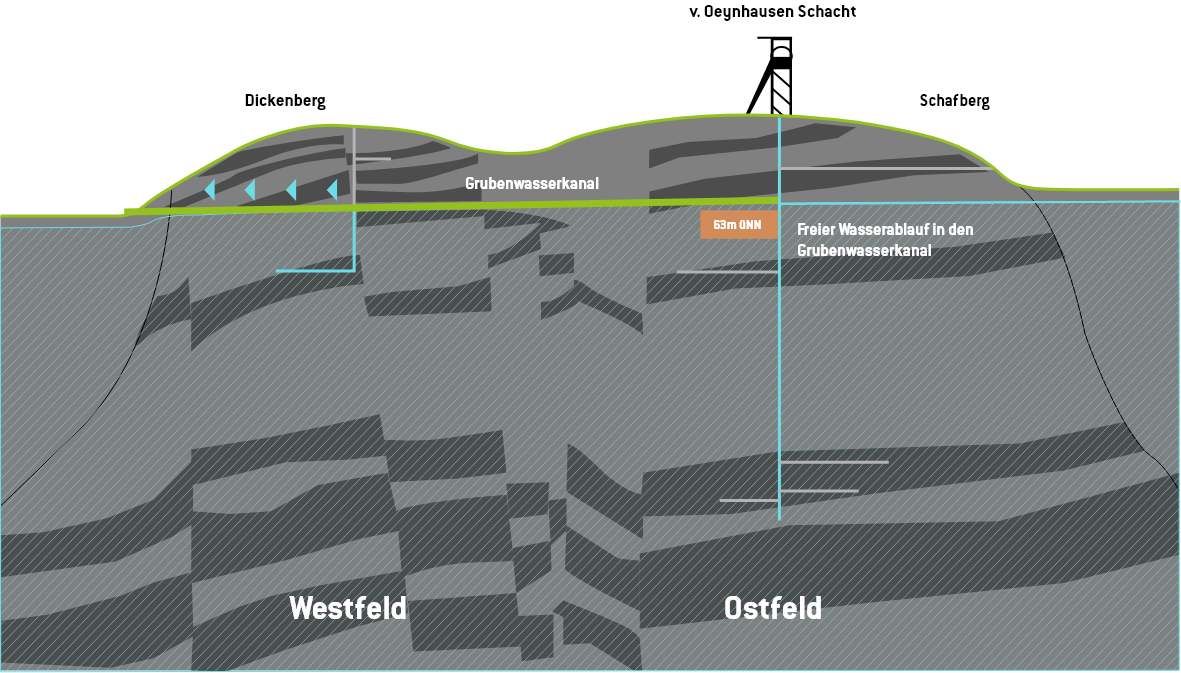
In the West Field of the Ibbenbüren mine, pumping operations were halted as soon as coal production ended. By the end of 1982, the water had risen again to a level of 65 metres above sea level. From there it flows down the natural gradient via the Dickenberger mining gallery to the water treatment plant in Gravenhorst. However, the pumps are still running in the East Field. A huge amount of energy required just for that: The average power consumption when active mining was still under way was equal to that of 12,900 households. The pit water concept for Ibbenbüren therefore envisages raising the levels in the East Field to the same level, leveraging the good experience made in accomplishing that task in the West Field. In order to drain the West and East Fields together, the Dickenberger gallery is to be replaced by a new pit water canal. The underground facility is scheduled to be completed by the end of 2024. From then on, all pit water at Ibbenbüren will be received and treated at the Gravenhorst water treatment plant without any use of pumps. After being treated there, it will be discharged into the Aa and flow into the Ems.
Pit water canal in Ibbenbüren
In December 2022, excavation of the approximately 7.4-kilometre canal in Ibbenbüren began at a depth of around 70 metres. By 2025, all pit water from the colliery is to flow without power-intensive pumps through the 3.6 metre-wide canal into the pit water treatment plant in Gravenhorst, which is still under construction. The costs of more than 200 million euros will be financed by the RAG-Stiftung.
Starting signal for the new mine water canal
In addition to the previously mentioned energy savings and related reduction in CO2 emissions, implementation of this pit water concept harbours a number of other ecological and geological advantages. Since the water no longer seeps to such a depth, the mineralisation caused by leaching is also significantly reduced. That means the salt concentration in the long term will be only one hundredth of the current figure. In addition, as the water level rises, the pressure between the mine workings and their surroundings will be in equilibrium. That prevents water from seeping into or escaping from the mine workings. As a consequence, the amount of pit water accumulating will drop by about 80 per cent when the water levels in the East and West Fields are equalised. In combination with the lower degree of mineralisation, the saline loads discharged into the Ibbenbüren Aa will be reduced by up to 99 per cent.
Water management reduces the pit water in Ibbenbüren by
80%
99%
meaning the saline loads discharged into the Ibbenbürener Aa are lower.
The RAG-Stiftung, which has ensured financing of the perpetual obligations from German hard coal mining since 2019, is thus fully living up to its responsibility together with RAG. In the future, too, pit water management in Ibbenbüren will be enhanced, monitored and officially controlled in line with the latest technological advances in order to ensure that all the requirements for strict protection of groundwater and drinking water are met sustainably.
Of course, little of all that is visible above ground. The Rudolfschacht and Hopsten slag heaps dominate the landscape. Both have evolved into a valuable natural habitat for flora and fauna over years of carefully planned recultivation work. Here, too, the post-mining future has long since begun for Ibbenbüren.
